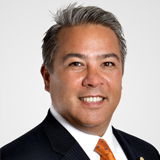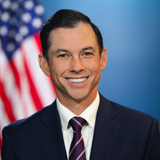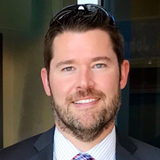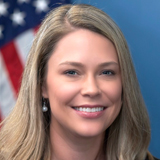What’s Next:
From Black Swans to Unknown Knowns
Security professionals evaluate risk through many lenses. What keeps them up at night are the Black Swan risks that come seemingly out of the blue and are only understood with the luxury of time and hindsight. However, some issues are well known but seem only tangentially related to security. These “unknown knowns” are well-documented, but their effect on security seems remote. Recognizing the impact of these events and how they play out on the world stage, including natural disasters, public threats to executives, and anger and conflict in every corner of life, can make all the difference. Strong teams and effective partnerships with organizations focused on workplace resilience are key to navigating these complexities. Their collaboration helps security professionals strengthen their approach and develop the agility needed to realize and respond to evolving threats. Join your colleagues during three Game Changer sessions designed specifically to explore trends that will shape security’s future—from work to school to public spaces.
Monday, 29 September | 11:15 AM – 12:15 PM
When High-Profile Means Danger: Protecting Executives from Public Threats
A company’s public reputation can have deadly implications in the Internet age. CEOs traditionally have been the victims of violent attacks because of their personal lives and a direct link with the perpetrator. But, when UnitedHealthcare CEO Brian Thompson was shot and killed in December 2024, he was targeted because of the actions of his employer. What does this mean for companies seeking to control their reputations and executive protection specialists trying to protect executives?
By the end of the session, you will be able to:
- Differentiate an organization’s branding from its reputation
- Analyze the impact a change in perception can have on an organization as well as its protection
- Reevaluate executive security measures and protection services
Speakers:
Tuesday, 30 September | 11:15 AM – 12:15 PM
Risk is Everywhere: Fostering Safety in the Workplace, Schools, and Public Spaces
During only the first moments of 2025, a U.S. citizen and veteran drove a truck into a crowd of New Year’s revelers on Bourbon Street in New Orleans killing 14 people and injuring dozens more. Workplace violence has been on the rise, with the healthcare and social services seeing the largest increase. School shootings continue, with four mass shootings in 2024 while U.S. government officials identified cyberbullying as the biggest threat to the health and well-being of students. Given the trending increase in both school and workplace violence, how might you have an impact on managing risk?
By the end of the session, you will be able to:
- Analyze current landscape and the overall effects it has on the health and well-being of individuals
- Overcome and diffuse challenging situations through de-escalation
- Navigate current threat landscape and tactics deployed within the industry
Speakers:
Wednesday, 1 October | 9:45 AM – 10:45 AM
Resilience Amid Changing Conditions: Partnerships, Risk Transference, and New Patterns to Predict
In 2024, disasters cost an estimated $320 billion worldwide. Weather was responsible for 93 percent of those losses, according to data released by global insurance firm Munich Re. Wildfires are testing the limits of insurance. Severe weather patterns are shifting, disrupting traditional concepts of storm seasons. Civil unrest and political upheavals put security plans to the test while disrupting organizations’ supply chains and business continuity plans. How can you be ready for crises—both predictable and unexpected—on the global risk landscape?
By the end of the session, you will be able to:
- Assess disaster preparedness strategies for individuals, communities, and organizations.
- Identify potential partnerships and resources available to support organizations during emergencies.
- Incorporate risk assessment, resource allocation, and recovery strategies into overall response plan









